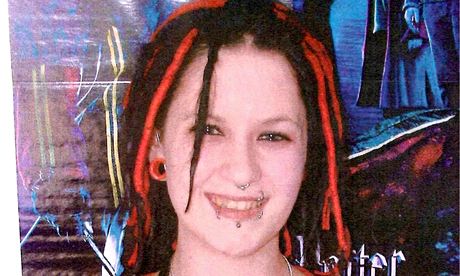
My new novel Hate, inspired by the murder of 20-year-old Sophie Lancaster in Bacup, Lancashire because she dared to be different, addresses the impact of a hate crime. In Sophie's case, she was assaulted and killed because she belonged to a sub-culture, dressing in "Goth" and alternative clothing.
The moment I met Sophie's mother Sylvia and heard her story I felt an immediate affinity with Sophie. I wore my hair long in the Sixties, was a punk in the Seventies and, like many youngsters, faced my fair share of ridicule, though nothing like the horrific hostility meted out on Sophie and her boyfriend Rob.
When I was Sophie's age in the early Seventies it was much more dangerous to be gay than it is now. I had gay friends who had been assaulted because of their sexuality. I once joined a campaign to force a pub in Manchester not to exclude gay and lesbian customers. Homophobia could be vicious and "gay-bashing" was common.
The portrayal of gay people in popular culture often legitimised the widespread bigotry in the community, but there was a growing refusal to put up with the situation. Alongside protests against racism and sexism, there was a movement in support of gay equality. I remember one turning point. I was a supporter of the Rock Against Racism movement and the Tom Robinson Band featured in many of its gigs. In 1976 Tom wrote "Glad to be Gay." I can remember being part of a huge crowd punching the air with our fists and singing along to the lyrics. You know what? Ninety per cent of us must have been straight. It is hard to imagine now, but back then BBC Radio 1 wouldn't broadcast the song on its Top 40 Chart Show! The much more liberal attitude to LGBT (lesbian, gay, bisexual and transgender) people we experience now owes a lot to those days.
This experience informed the way I structured the novel Hate. Anthony is the "Bad Samaritan" who witnesses the murderous attack in the park, but fails to do anything to stop it. I needed him to face a moral dilemma to give him the chance to change and achieve some kind of redemption. This led me to the character of Oli, intelligent, confident, slightly cocky. A planned homophobic attack on Oli leads Anthony to re-examine his values and act.
Oli is not just a plot device however. I was keen for him to be a fully realised character, a loved brother and son, not a two-dimensional symbol. Hopefully one day nobody will care in the slightest whether you are gay or straight.
Fiction will routinely feature gay characters who are organic to the plot as people and not included to illustrate an issue. If my novel contributes to that outcome, Hate will have achieved its purpose.
Need another reason to read Alan Gibbons' book Hate? Check out 2Kool4Skool's review of Hate here.

